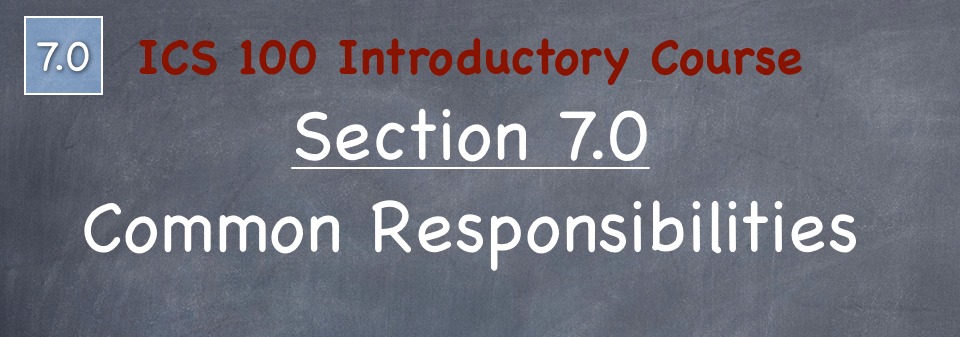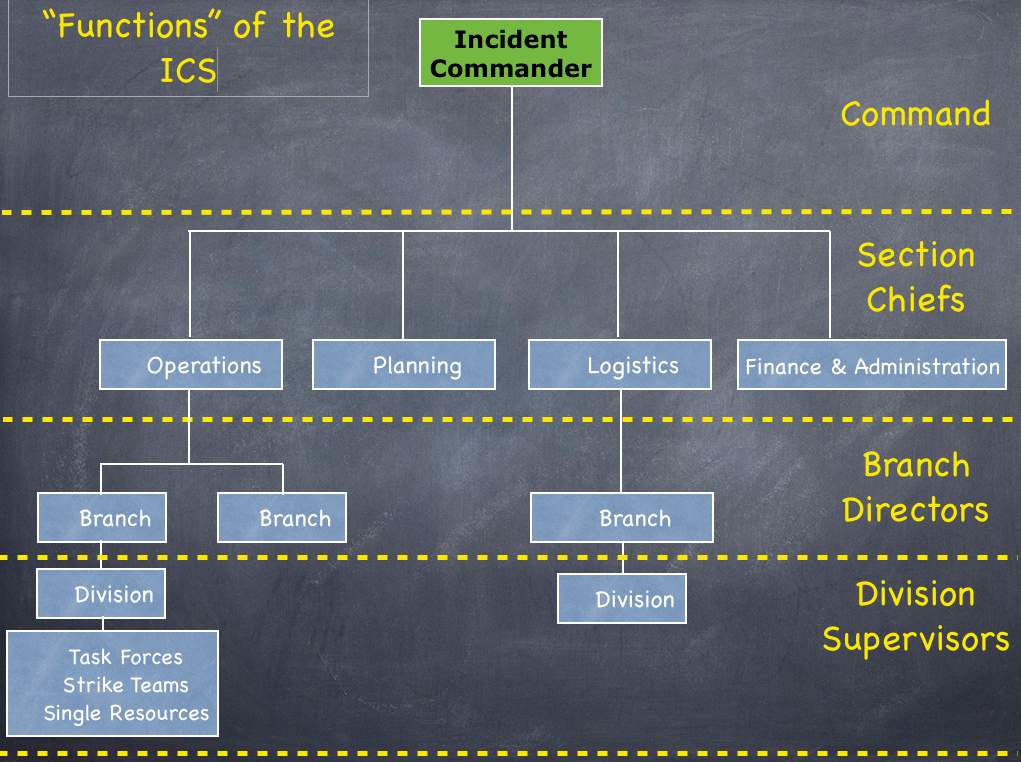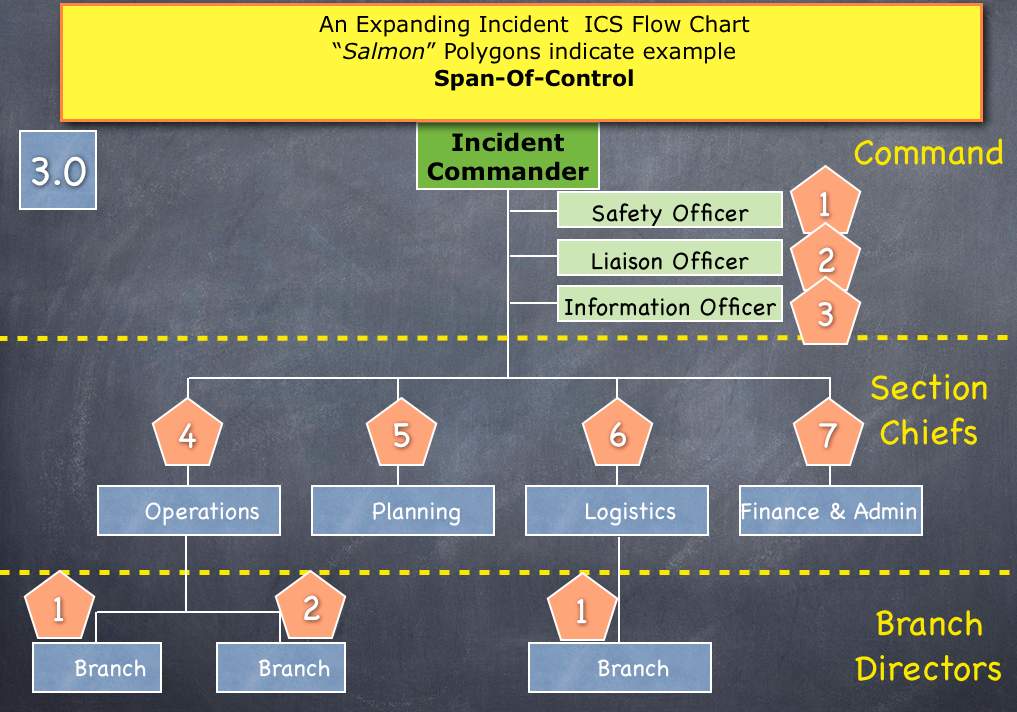DO NOT COPY - ALL contents - Copyright Protected
DRAM Ventures Inc. / www.firesafetraining.com

ICS 100 Introduction Course - Outline
1.0 Course Overview & Objectives
2.0 Introduction to the Incident Command (management) System
3.0 Main Components of ICS
4.0 IC Roles and Command Functions
5.0 General Section Staff Functions
6.0 ICS Facilities and Identification
7.0 Common Responsibilities
8.0 Short Quiz
ICS is NO PLACE
for the
LONE WOLF OR SOLO individual.
Prior to and at the beginning of a formal INCIDENT
Each involved agency / jurisdiction must;
- formally request appropriate personnel or equipment resources
- provide reporting location, date and time, transportation information, reporting to? information, communications used (radio, sat phone, cell phone) numbers and radio frequencies
- designated task of personnel
- notify personnel who their supervisor is
- possible duration of deployment
Each individual shall provide;
- personal gear and equipment
- bring any specialized equipment required
- check in at appropriate incident location (usually the ICP or BASE)
- report to their immediate supervisor
- attend incident briefing(s)
- brief and organize any subordinates they may have
- gather appropriate equipment as required
- maintain appropriate reporting forms
- debrief personell as appropriate
Unity of Command
Each person involved in the ICS organization must only report to one supervisor.
Span of Control
You will note above that the Incident Command has only four “boxes” or Sections to be directly responsible for. The IC is overseeing or “controlling” these Sections.
It is therefore stated that there is a “Span of Control”. ... and in the above diagram , the “Span of Control” is four.
The standard Span of Control is three to five and it can extend to a maximum of seven. Therefore we say the Span of Control within the Incident Command System is three to a maximum of seven.
Five is the preferred Span of Control. (Note the Span of Control in diagram below)
In the blackboard diagram(S), below you ail see that the IC. has a total of 7 subordinates. Remember, there are always Operations, Planning, Logistics and Finance & Admin. The light green boxes (1, 2, & 3) could also be supervised by a Deputy I.C. then the Span of Control for the IC would revert back to four. … and the Deputy I.C. would have three as a Span of Control.


DO NOT COPY - ALL contents - Copyright Protected
DRAM Ventures Inc. / www.firesafetraining.com
Transfer of Command - moving the responsibility of Incident Command from one person to another (or in some cases - an agency). It could also be from a single Incident Commander (IC) to a Unified Command. Some form of formal briefing should also be conducted. It can be oral but written is highly recommended.
Develop Incident Action Plan (IAP) - Planning Section
ICS, Command and General Staff develop operational goals and Planning creates an IAP which is based on managing by objectives. This is usually a longer term document however it is also often completed for each operational period.
A basic IAP has four sections.
- what needs to be done?
- who is going to do it?
- how do we effectively communicate this?
- what do we do during a medical emergency?
Communications System(s) - Logistics Section
Developed by Logistics
Standardization of;
- equipment
- procedures / terminology
- systems
Much of the above must be developed and implemented prior to any emergency incident occurring.
Common Terminology
Involved personnel and agencies must use only standard ICS terminology. They must "leave" their specific agency terminology and acronyms back in their usual place of work.
Demobilization - Planning Section
Demobilization Unit Leader is subordinate to the Planning Section Chief
- All Units must communicate with Planning regarding demobilization plans and issues.
- The Demobilization Unit Leader will then develop a Demobilization Plan.
- Demobilization Plan is communicated through Planning to the Incident Command Team for approval
DO NOT COPY - ALL contents - Copyright Protected
DRAM Ventures Inc. / www.firesafetraining.com
DO NOT COPY - ALL contents - Copyright Protected
DRAM Ventures Inc. / www.firesafetraining.com
We wish to acknowledge and thank all organizations and persons for the use of all videos and photos on this web site.
